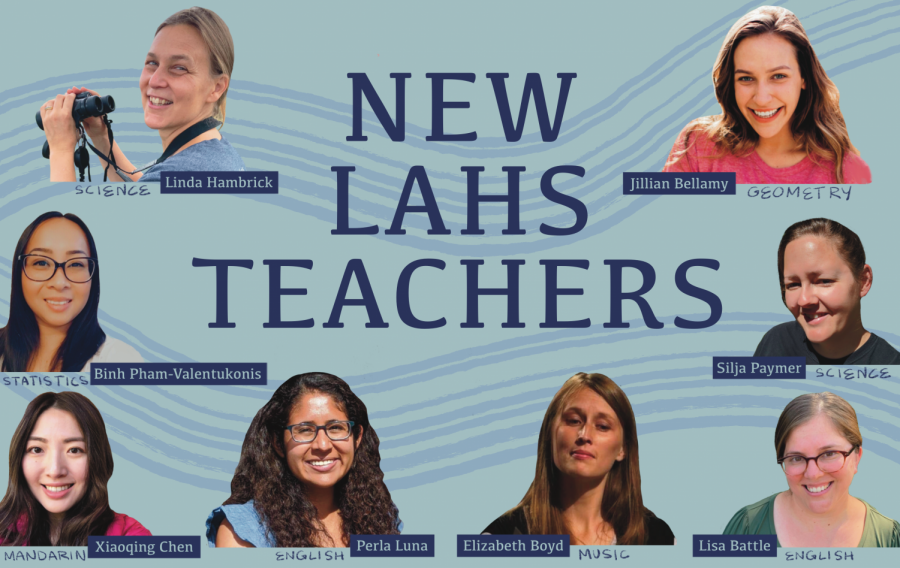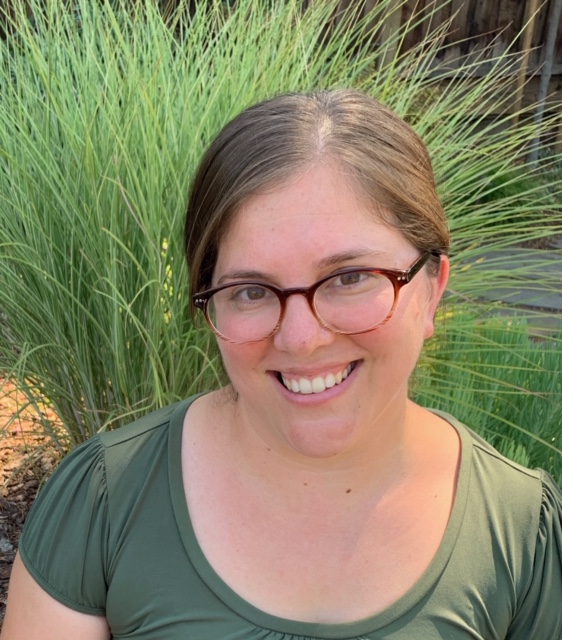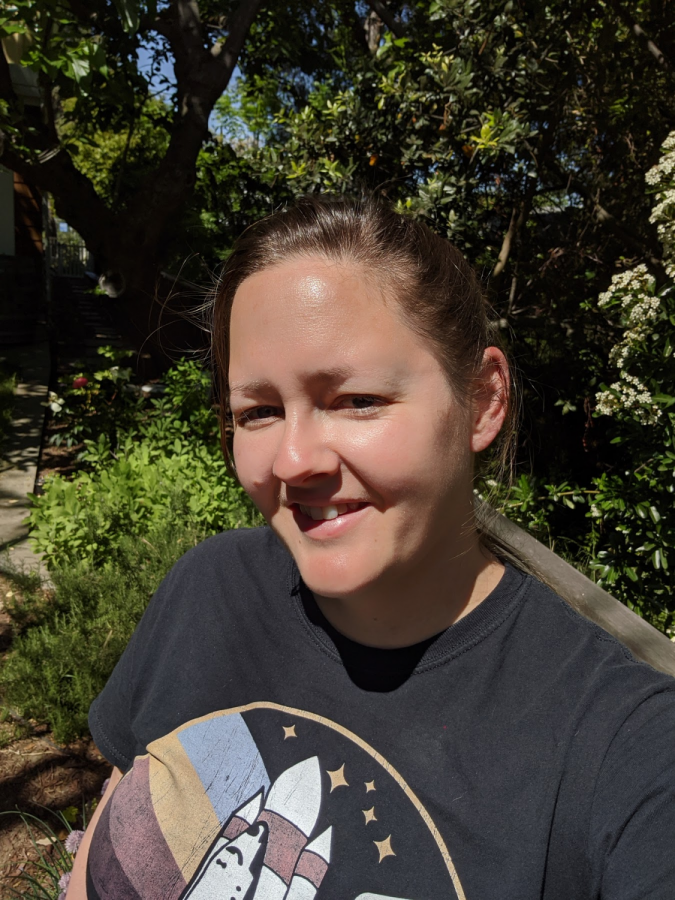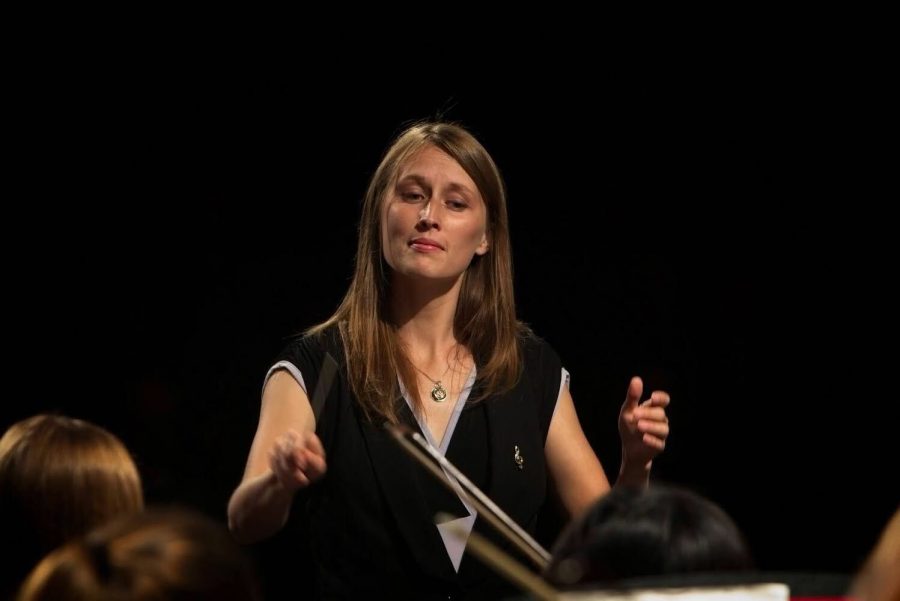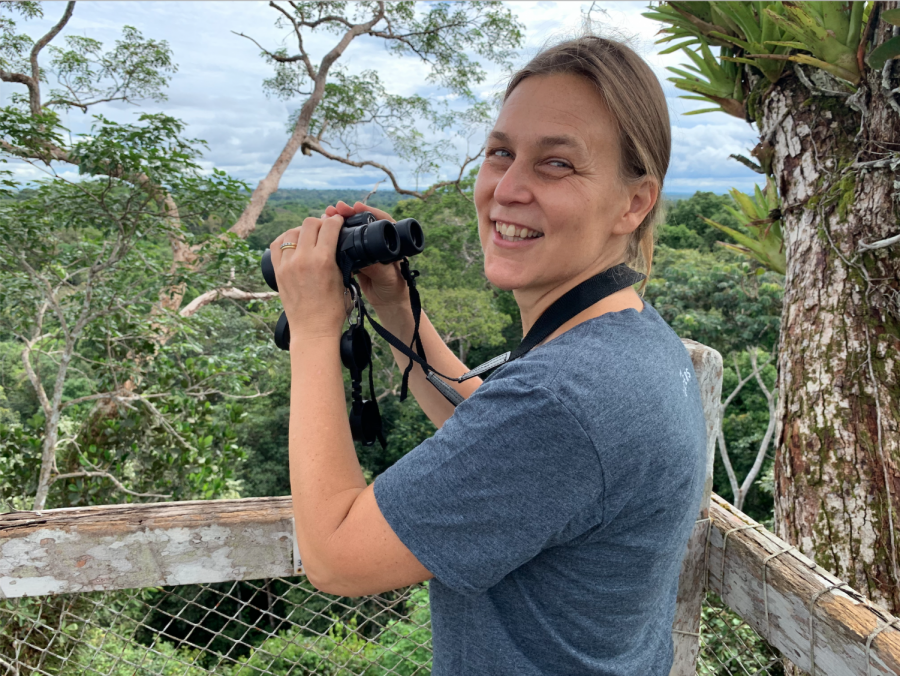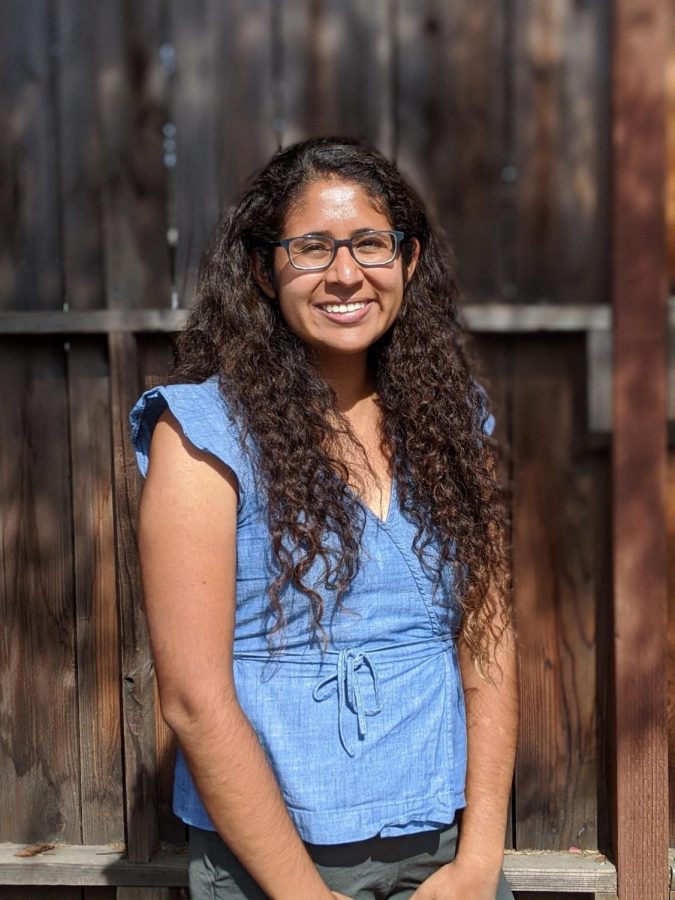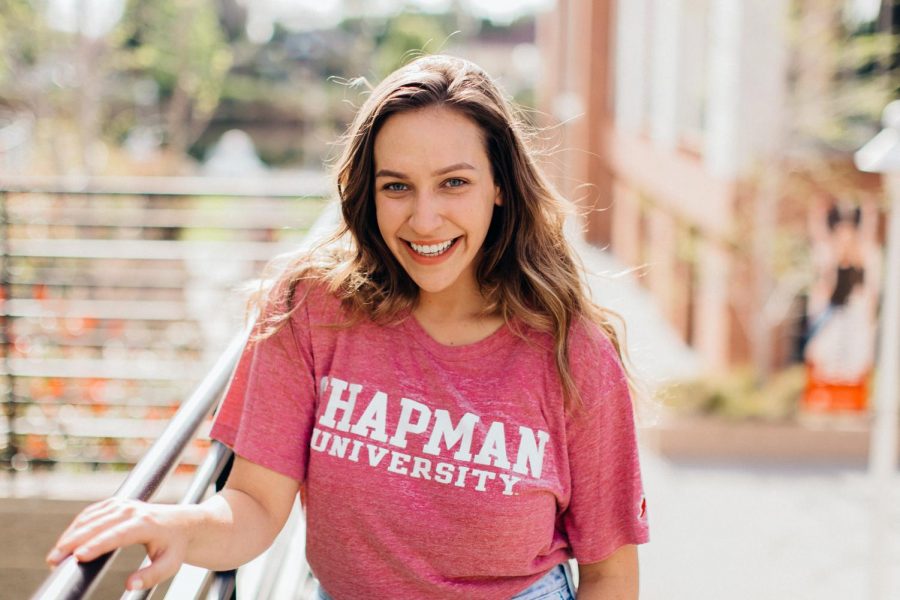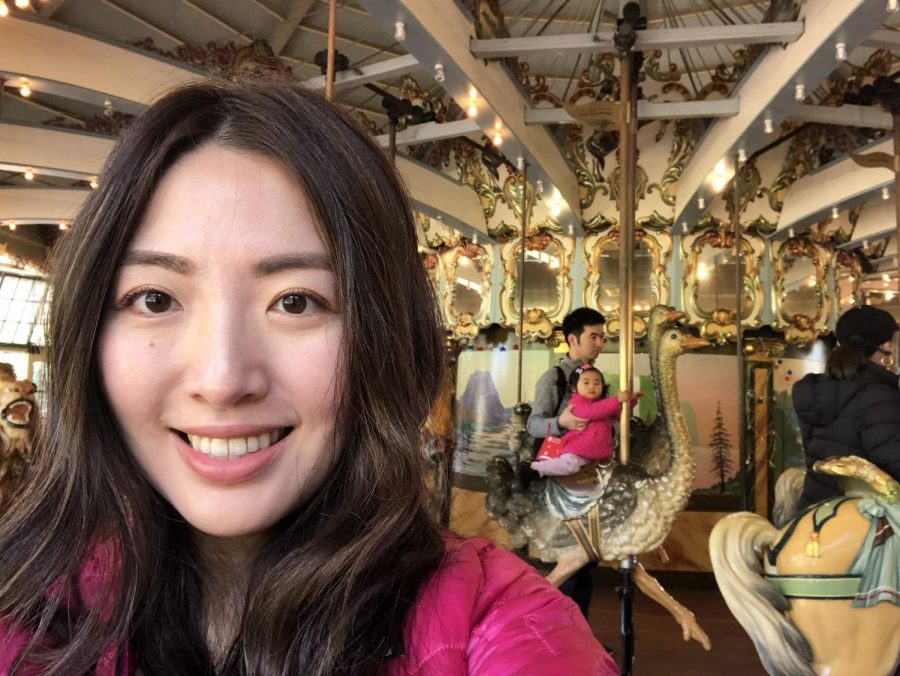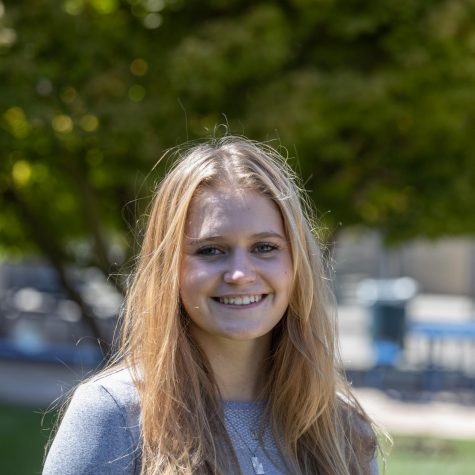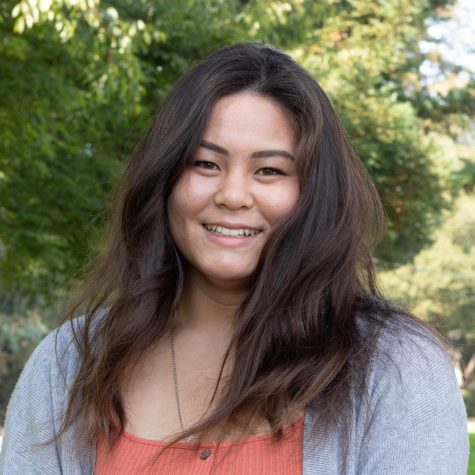Starting their LAHS teaching careers virtually, some would assume that these teachers would feel disconnected from the school community. However, they are more than ready to overcome the challenges of Distance Learning and bond with their students.
Meet the newest members of Los Altos’ faculty
August 17, 2020
The Talon gives you an exclusive look into the lives and passions of Los Altos High School’s new teachers for the 2020–2021 school year.
Continue reading to get to know the new additions to the LAHS teaching community including English teacher Lisa Battle, science teacher Silja Paymer, music teacher Elizabeth Boyd, and statistics teacher Binh Pham-Valentukonis, science teacher Linda Hambrick, English teacher Perla Luna, math teacher Jillian Bellamy and Mandarin teacher Xiaoqing Chen!
Lisa Battle
Teaching during the pandemic in one of the most impacted cities in the United States was a harrowing experience for English teacher Lisa Battle. Luckily, Battle was able to return to Los Altos and teach at the school where she had first realized her passions for Drama and English alongside her very own inspirations.
Back in March when the pandemic first hit, English teacher Lisa Battle lived in Queens, New York, one of the largest COVID-19 hotspots in the United States. Along with many others, Battle was coping with the nonstop chaos while continuing to teach her students online.
“We were all living in fear, constantly hearing sirens; our hospitals were overflowing and sadly, so were our morgues,” Battle said. “My students were not just suffering the loss of their everyday routines and their daily connection with friends, but also their sense of security, and some even lost family members. This experience made me realize how much society relies on its education system for so much more than academics.”
Battle, a Los Altos High School graduate herself, has relocated back to the Bay Area to continue her career in her hometown. She now teaches alongside some of her former instructors, including Drama teacher Nancy Moran and Assistant Principal Galen Rosenberg. They, along with several other teachers, sparked Battle’s love for English and Drama and encouraged her to pursue a profession in education as a student.
Battle attended Whitman College and subsequently New York University to earn her teaching licenses in English and theater. After graduating in 2012, Battle stayed in New York to teach both subjects at local schools. When the pandemic hit, it not only affected her teaching, but also her personal security, ultimately leading her back to Los Altos where she would be close to family and schools were safely managing the back-to-school process.
“I know the pandemic has hit here in Los Altos and I know it’s been scary,” Battle said. “I do think, however, that having lived in New York through — the epicenter of it all — has given me a different and more immediate perspective.”
Some of the challenges Battle faced in New York followed her to Los Altos, but here she was able to better teach students through the well-designed back to school plans. Despite not being able to interact with her students face-to-face right now, Battle has a positive outlook on the potential of virtual teaching at LAHS, including being able to connect with students in different ways.
“There’s a lot in our students that we don’t always see,” Battle said. “When you can actually see their cat or their dog, you get to see into their worlds. Sometimes students even grow more academically because they were previously hiding at school.”
Silja Paymer
After years of working in a fairly isolated environment as a mechanical engineer, science teacher Silja Paymer decided on a slight change of pace: teaching high schoolers. Equipped with her passion for hands-on learning and her firsthand knowledge of environmental science from volunteering as a tour guide at Hidden Villa, Paymer looks forward to building meaningful connections with her students.
Science teacher Silja Paymer went from working as a mechanical engineer sitting alone in front of a computer to sitting in front of a computer with the faces of her students smiling back at her.
“While I really enjoyed the engineering aspect of my work, it was a bit isolated, and I wanted a career that was a lot more collaborative and interactive,” Paymer said. “Being able to teach AP Physics allows me to keep a lot of the hands-on aspects of engineering but in a more engaging setting.”
While teaching at various schools in San Jose for six years, Paymer’s love for hands-on work led her to volunteering at Hidden Villa, where she has been as an education tour guide for a decade. Her experience with the plants and wildlife on the farm translated straight over to her teaching. She has never explicitly taken an environmental science class and this will be her first year teaching the subject.
Paymer’s biggest focus is to have a student-centered classroom where students feel like they are the priority within the classroom. However, there are endless difficulties with online school that make it a lot less natural to give students the same attention as a physical classroom.
“Remaining student-centered on digital platforms has been really interesting in terms of ensuring that students can still be successful when you’re not there all the time to check in,” Paymer said. “We need to consider how we build the culture because checking in with students online has to be a lot more deliberate and conscious.”
Connecting with students on a personal level is a major part of Paymer’s goal to create a positive and welcoming classroom environment.
“I always aim for a relationship with my students that’s based on kindness, where we work on being kind to both ourselves and mistakes,” Paymer said. “From there, the student-teacher relationship of mutual respect and honoring each other’s voices comes naturally.”
Elizabeth Boyd
Music teacher Elizabeth Boyd had been immersed in the Texas music scene playing live for swing dancers and jazz gigs on her bass before deciding to follow her dream of making students fall in love with their instruments. During distance learning, she hopes to build a strong sense of community within her ensemble and to encourage students to explore their musical abilities together.
When music teacher Elizabeth Boyd found the violin in sixth grade, she immediately found her life’s calling and knew she would never look back.
Boyd’s initial love for music with the violin was reaffirmed in high school, where she found her true passion: the bass. While still a student in high school, Boyd began teaching private music lessons in her community, where she continued to refine her skills as a musician and cultivate her ultimate career as a teacher.
“The skills that students build in music are applicable to just about any subject or career that they are passionate about,” Boyd said. “Students collaborate, empathize with others and learn to be receptive to feedback and be vulnerable every day in rehearsal.”
After graduating from high school in her home state of New Mexico, she moved to Austin, Texas, where she got her undergraduate degree at the University of Texas at Austin.
In Austin, Boyd’s career as a musician took off, as her chosen instrument, the bass, allowed her the freedom to play in a wide variety of music styles that she had always wanted to explore.
“Professionally, I played in a lot of musicals and freelance classical and jazz gigs,” Boyd said. “One of my favorite times in my career was when I played in the Manouche jazz scene in Austin. I’ve been able to connect with so many different people through those experiences.”
After eight years in Austin, Boyd moved to Solano County, Calif., in 2014 to further pursue a formal teaching career. She received her teaching credential through CSU East Bay and began instructing high school music classes in Solano County.
“Working with high school students is my favorite,” Boyd said. “They are so confident and there’s so much potential for growth, for creativity, and they really take ownership of their learning.”
At LAHS, Boyd will teach instrumental music to the freshmen ensembles, hoping to create a tight-knit virtual community within her classroom.
“During COVID-19 times, having an outlet that is satisfying and rewarding is really important,” Boyd said. “Music is a way for kids to make deeper connections with each other. It’s different than in person, but I look forward to seeing my students collaborate and their different strengths coming together to create music that I can’t even imagine yet.”
Binh Pham-Valentukonis
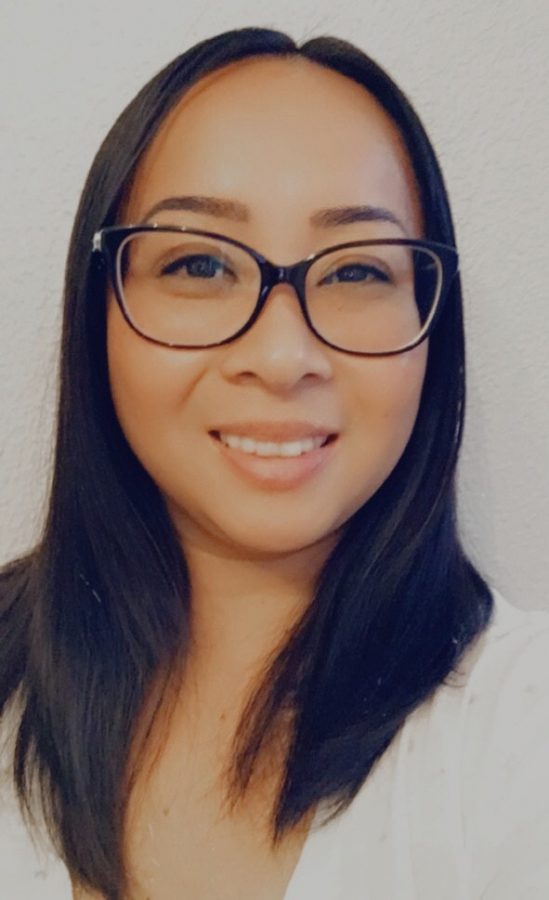
Courtesy Binh Pham-Valentukonis
Even with the many setbacks teachers are encountering during distance learning, statistics teacher Binh Pham-Valentukonis refuses to look anywhere but the bright side. As a dedicated problem-solver, Pham-Valentukonis is excited to incorporate a new curriculum in her class, help achieve student equity within the LAHS community and adapt to any technological challenges that come her way.
In non-pandemic times, statistics teacher Binh Pham-Valentukonis didn’t think twice about the brief and personal day-to-day interactions she had with her students outside of teaching.
“I will never again take for granted the student showing up for class early to tell me about their weekend or the student sitting in the back of the room trying to stay under the radar because they are having a bad day,” Pham said. “These relationships are the foundation of the classroom and just so challenging in the remote world.”
Despite the challenges that come with starting the school year virtually, Pham has seen herself grow as an educator through remote learning.
“I can wholeheartedly say that the shift to remote learning has been, and will be, for the better,” Pham said. “This shift has required me to use technology, innovation and creativity for the most critical assessments while highlighting the importance of the teacher-student relationship.”
Pham is no stranger to adjusting to the unexpected, though. She had originally planned on studying computer science and psychology in college; after working as an intern at a local school and noticing firsthand the dedications of the teachers around her, she changed her focus to education in her sophomore year.
“My path to education happened by accident, but it felt like it was meant to be,” Pham said.
She then transitioned to pursue a teaching career in mathematics due to her appreciation for the logic and flow of the subject in her studies. Pham taught at Gilroy High School for 11 years before coming to Los Altos High School and is still committed to teaching students how to solve the puzzle of math.
“I love math because of its problem-solving character; everything is a puzzle,” Pham said. “The harder the problem, the bigger the reward. The more problems you get right, the more problems you want to solve. Math is a tapestry of complexity that awaits to be discovered and to me, that’s magical.”
Alongside sharing her passion for mathematics with her students through her implementation of a vigorous and engaging curriculum in her classroom, Pham continues to express concern for her students’ and co-workers’ wellbeing throughout distance learning.
“The existing systemic inequities that exist in education are now much more acute and glaring,” Pham said. “We are struggling to meet the needs of our most vulnerable students and communities because they have not been at the center of what we do. Luckily, I am now in a district that has equity as one of the main drivers for their work, and I look forward to being part of that positive movement.”
Linda Hambrick
Having studied giant sea snails off the Bahamas and taught in the Netherlands, science teacher Linda Hambrick is not your average science teacher. She’s delighted to return to the Los Altos community, what she considers home.
From researching giant snails in the Bahamas to observing shark species in Baja California to teaching in the Netherlands, Linda Hambrick is almost as cool as Bill Nye.
Hambrick was raised in every nature-loving kid’s paradise. She was born in Texas and moved to Oklahoma when she was five, growing up in a house located right across from a forest full of life and creeks. Those first curiosity-filled explorations were the start of her path to pursuing a career in biology.
“We would build forts and swim in ponds in the summertime, catch toads and crawdads and all kinds of stuff,” Hambrick said. “That’s definitely where I started spending a lot of time outside looking in, observing and discovering the natural world.”
As a teenager, Hambrick continued to spend her time outdoors, starting to scuba dive regularly when she was just 13.
She went on to study biology at the University of North Texas, but transferred to Principia College in Illinois in her sophomore year to complete her undergraduate degree.
After graduating in 1993, Hambrick decided to pursue her initial love of marine life by immersing herself in her work as a marine biologist. Hambrick studied a species of giant sea snails called the Queen Conch on a tiny remote island in the Bahamas, where there was only one phone for the entire island.
Besides years of studying snails, Hambrick has several other impressive research experiences under her belt: She has marked the nests of sea turtles in the Cayman Islands, measured the length of different shark species in Baja California and participated in three different labs at Stanford.
After years in the field, Hambrick’s transition into teaching was nearly accidental. In a free period between studies, she took up a middle school substitute teaching position in California near Los Altos, which she said turned out to be one of the most challenging yet rewarding experiences she ever had.
“I don’t know if I’ve ever worked so hard in my life,” Hambrick said. “Every morning I was up at six trying to figure things out and wouldn’t go to bed until 10. That was my schedule for almost all year. It was insane, but I fell in love with the process. I really loved biology and the content, but I’m also fascinated by how people learn differently.”
Hambrick then enrolled to get her teaching credential and Master of Biology at San Jose State University in 2000, and has been teaching ever since.
In 2003, Hambrick and her husband moved to the Netherlands, where they lived for 12 years. Hambrick taught middle school science at an international school, where she became a student herself as she adapted to an entirely new culture.
“Moving taught me to be more open minded,” Hambrick said. “Living in the Netherlands, there were different cultural rules. I really felt like I was a baby again and had to learn how to be, how to interact socially, what was acceptable or not.”
After moving back to the United States, Hambrick taught high schoolers for the first time at South San Francisco High School, where she found her true calling.
“I was just like, ‘Oh, where have you been all my life?’” Hambrick said. “I love people of all ages, but high school is just super enjoyable. I like the students. I like the topic. I liked the in-depth discussion. This is my group.”
While she loved teaching in San Francisco, Hambrick was finally drawn back to Los Altos, where she had lived before moving to the Netherlands, to work at LAHS.
This upcoming school year, Hambrick will be teaching environmental studies and biology, where she hopes to bring the joy of studying life to her students, overcoming the distance learning barriers.
“We’re going to see how we can get students outside, which I think is really important,” Hambrick said. “It’s distance learning, not online learning, and there’s a difference. I want to make sure that my students are out mapping green spaces, being aware of what’s around them, applying what they’re learning to the local ecosystems.”
Perla Luna
English teacher Perla Luna is a first-generation LAHS graduate returning to teach and inspire students like herself. Luna hopes to make a comfortable environment for her students where everyone can be themselves.
As a high school student at LAHS, English teacher Perla Luna was not one to be the outspoken character in discussions. Instead, she enjoyed the quiet sanctuary of English and AVID teachers’ classrooms, which made her feel like she belonged.
“When I was a student, English was a subject that helped me find the power in my own voice,” Luna said. “I was very shy, hesitant and not assertive at all, but my English and AVID teachers helped me figure out the power behind my own voice.”
Luna is a first-generation college student whose parents immigrated to the United States from Mexico. At LAHS, while her peers competed to get into Ivy League schools and piled APs, Luna was focused on the sole task of getting through the college application process.
“At Los Altos, especially when you’re on the AP track, it becomes very competitive,” Luna said. “You feel this need to go to a certain school or your work is not valid somehow. I decided on Santa Clara and I felt like that wasn’t good enough for some reason because everybody was making me feel confused about my choice. But in retrospect, I realize that it really doesn’t matter what college you go to as long as you’re doing what’s best for you.”
After graduating from Santa Clara University with a bachelor’s degree in English and sociology in 2019 and later from Stanford with a Master of Education in 2020, Luna decided to come back to LAHS so she could help students like herself actualize their dreams and gain confidence in their abilities as she had done through AVID.
In her classroom, Luna hopes to pass on the lessons she learned through her high school and college journey to her students; that not everyone must conform to the academic and social pressures of our school environment.
“I wanted to come back to a community that I could see myself in,” Luna said. “I also want to be someone who can reassure students that it’s okay to follow their own path, even if their path might not look like everybody else’s. If students are feeling insecure or like they’re not fitting into their classes, I want to help them through that because I’ve been there.”
Despite falling in love with English in high school as part of her own academic path, Luna recognizes the dislike some students have for the subject.
“Some people hate it and wish that they never had to see another book in their life, but whether or not you grow up to be an English major or even just be a regular reader, you need [English skills] to function in society,” Luna said. “You need to be able to communicate well and to express yourself, which are important life skills that I want to make sure students walk away with.”
Especially during distance learning, Luna believes that English is a crucial subject for her students to be able to better navigate the uncertainty of quarantine.
“In terms of their lives right now, English is an important outlet for students to express themselves, but also to help them gain those critical thinking skills they need to understand everything that’s being thrown at us during this time,” Luna said.
Jillian Bellamy
Geometry teacher Jillian Bellamy has had her fair share of late night math study sessions in high school. Never imagining that she would be teaching high schoolers, Bellamy is excited for her first year of teaching.
Desperately trying to figure out the secrets to her math homework at 3 a.m. used to be a weekly routine in the high school life of geometry teacher Jillian Bellamy. Despite constant challenges and frustrations, Bellamy always strived to succeed in her high school’s accelerated math courses.
Going into undergraduate school at Chapman University, Bellamy dreamed of becoming an elementary school teacher, as she adored working with kids. During her sophomore year, however, she began tutoring high school AVID students in math, discovering her passion for working with teenagers. Her classes had further inspired her to begin exploring the endless intricacies of math instead of just learning many concepts one after another.
“College is when I started to love math because I spent time trying to deeply understand it, which made me appreciate it more,” Bellamy said. “I regret not having a similar mindset in high school, but I am thankful that I was able to discover my love of math then.”
Bellamy graduated from Chapman in 2019 with a bachelor’s degree in mathematics and received her Master of Education in 2020. Amid the pandemic, Bellamy relocated back to the Bay Area, where she grew up, to virtually start her teaching career here at LAHS.
“COVID-19 has changed my perspective on most things in my life, education being one of them,” Bellamy said. “For example, the integration of more technology into lessons is transforming traditional teaching practices to fit the needs of 21st century learners. While I acknowledge the many challenges and obstacles that this pandemic presents, I try to remain as optimistic as possible.”
Bellamy looks forward to introducing students to geometry in an engaging and hands-on manner to ensure that it isn’t just another class students have to endure sitting through. She also hopes that her students gain an appreciation for the implicit math concepts functioning all around them.
“I know teachers say it all the time, but math is truly everywhere,” Bellamy said. “While you might not be proving that two lines are parallel in your daily life after geometry, the critical thinking skills you are developing will be essential in any path you choose to take in life. I actually used geometry a few days ago to help my grandma remove a fork that was jammed in her dishwasher.”
Beyond her excitement for teaching in her new classroom, Bellamy admires the school community that she has already become a part of at LAHS.
“The LAHS community is full of the most supportive and positive staff and I truly see myself learning and growing every single day alongside my colleagues,” Bellamy said. “There is a general sense among staff that there is always more to learn and that we can always do even more for the students, which is something so unique and inspiring.”
Xiaoqing Chen
Mandarin teacher Xiaoqing Chen moved across the world to experience a new facet of academia. Chen looks forward to taking on the task of teaching virtually and connecting with her students.
Instead of following her family’s legacy as an educator in China, Mandarin teacher Xiaoqing Chen moved to the United States to experience a new type of education system. The deeply competitive nature of the Chinese educational environment inspired this move, but she maintained part of her Chinese culture by teaching her native language.
While earning her Master of Arts in Teaching at the University of San Francisco in 2010, Chen was introduced to a style of education that focuses on the well-being of students. It was a stark contrast from the focus on material success — namely, perfect grades — that she was taught to aspire to in China.
“In the United States, people are more aware of students as individuals,” Chen said. “They care about their feelings and their happiness. Back in China, people treat them like children that don’t have an independent way of thinking. They have too much unnecessary pressure from their school and their parents.”
Having an understanding of different societal definitions of success, Chen has found a balance between leading her students to academic proficiency while also caring for their well-being. Unfortunately, virtual lessons during the COVID-19 pandemic have made it harder for teachers to check in and connect with students, leading to more concerns about mental and physical health.
“The students’ emotional well-being is my greatest concern,” Chen said. “Because of COVID-19, the financial gap between students becomes more obvious. Some students don’t have access to stable meals three times a day, and others may not have a stable family environment, which might significantly impact their academic achievement.”
Despite the endless hurdles of providing education during COVID-19, Chen is always looking for ways to improve student-to-student interaction in virtual meetings. Having spent six years at the Chinese American International School in San Francisco as a Mandarin Educational Technology Coordinator, Chen has previously worked with education in a virtual environment and is excited to embark on a new learning adventure within LAHS.
“I view challenges as turning points, so I plan to embrace the challenge and see what opportunities arise from it,” Chen said.

